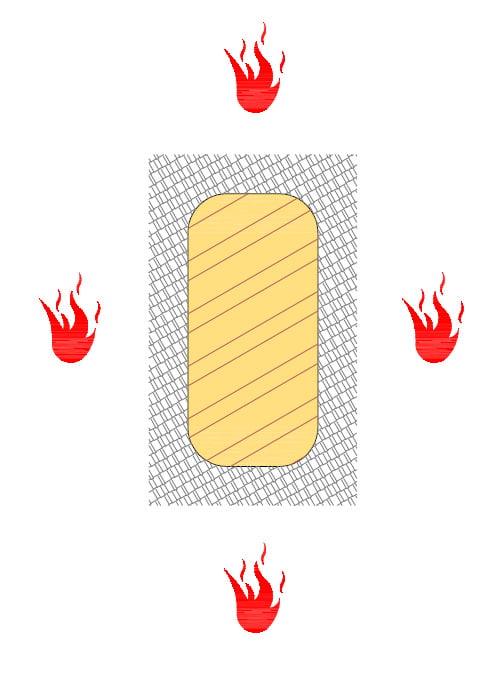Fire properties of wood
When the temperature of wood rises to 100 ºC, chemically unbound water begins to evaporate from it. The thermal softening of dry wood begins at a temperature of about 180 ºC and reaches its maximum between 320 ºC and 380 ºC. Then the lignin, cellulose and hemicellulose in the wood begin to disintegrate. The softening of moist wood begins earlier, at about 100 ºC.

The ignition temperature of wood is affected by how long itis exposed to heat. Wood usually ignites at 250 – 300 ºC. After ignition, the wood begins to carbonise at a rate of 0.8 mm per minute. Fire progresses slowly in a solid wood product, as the layer of carbon created protects the wood, and slows down the increase in temperature of the wood’s inner parts and thus the progress of the fire. For example, at a distance of 15 mm from the carbonisation limit, the temperature of the wood is under 100 ºC. This property is utilised in dimensioning load-bearing structures, among other things.
In glued laminated wood, the speed of carbonisation is less at 0.7 mm/min. The ignition sensitivity of wood increases as its density and moisture content decrease, and as the thickness of an individual piece of wood decreases. The sharp corners, rough surface, flaws and cracks of timber also increase the impact of fire.